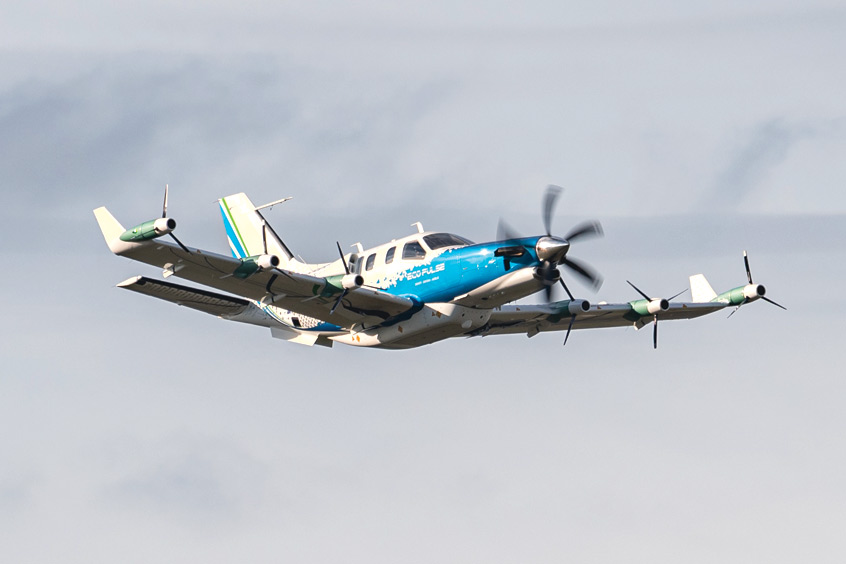Why visit ACE ’24?

Jointly developed by Daher, Safran and Airbus, the EcoPulse hybrid-electric distributed propulsion aircraft demonstrator has successfully performed its first flight test in hybrid-electric mode. It flew with its ePropellers activated, powered by a battery and a turbogenerator.
EcoPulse took off from Tarbes airport in France, the headquarters of Daher's aircraft division, on 29 November at 10:32 hrs CEST for a test flight that lasted approximately 100 minutes. During the flight, the crew engaged the electric propellers and verified the proper functioning of the demonstrator's flight control computer, high-voltage battery pack, distributed electric propulsion and hybrid electric turbogenerator.
This is the culmination of several technical milestones, including extensive ground tests and 10 hours of flight tests of the aircraft with the electrical system inactive.
"We confirmed today that this disruptive propulsion system works in flight, which paves the way for more sustainable aviation," says Safran EVP strategy and CTO Eric Dalbiès. "The lessons learned from upcoming flight tests will feed into our technology roadmap and strengthen our position as leader in future all-electric and hybrid-electric propulsive systems."
"This is a major milestone for our industry and we're proud to have powered the EcoPulse demonstrator first flight with our new battery systems," adds Airbus CTO Sabine Klauke. "High-energy density batteries will be necessary to reduce carbon emissions from aviation, whether for light aircraft, advanced air mobility or large hybrid-electric aircraft. Projects like EcoPulse are key to accelerating progress in electric and hybrid electric flight, and a cornerstone of our aim to decarbonise the aerospace industry as a whole."
"The flight campaign will give Daher invaluable data on the effectiveness of the onboard technologies, including distributed propulsion, high-voltage batteries and hybrid-electric propulsion," says Daher CTO Pascal Laguerre. "We're working to converge practical and significant know-how on design, certification and operation to shape our path toward more sustainable aircraft for the future."
Unveiled at the 2019 Paris Air Show, EcoPulse is supported by the French Civil Aviation Research Council and co-funded by the French civil aviation authority through France Relance, the French government's economy recovery plan, and NextGeneration EU. The demonstrator aims to evaluate the operational advantages of integrating hybrid-electric distributed propulsion, with specific emphasis on CO2 emissions and noise level reduction. This disruptive propulsion architecture enables a single independent electrical source to power several electric motors distributed throughout the aircraft.
Based on a Daher TBM aircraft platform, EcoPulse is equipped with six integrated electric thrusters or ePropellers supplied by Safran, distributed along the wings. Its propulsion system integrates two power sources: a turbogenerator, ie an electric generator driven by a gas turbine supplied by Safran and a high-energy density battery pack supplied by Airbus. At the heart of this architecture is a Power Distribution and Rectifier Unit, responsible for protecting the high-voltage network and for distributing the available electrical power, as well as high-voltage power harnesses, both provided by Safran. The battery pack designed by Airbus is rated at 800 volts DC and can deliver up to 350 kilowatts of power. The demonstrator also benefits from the aerodynamic and acoustic integration expertise of the European aircraft manufacturer. Airbus also developed the flight control computer permitting aircraft manoeuvres using the ePropellers, and synchrophasing to support future aircraft acoustic recommendations.